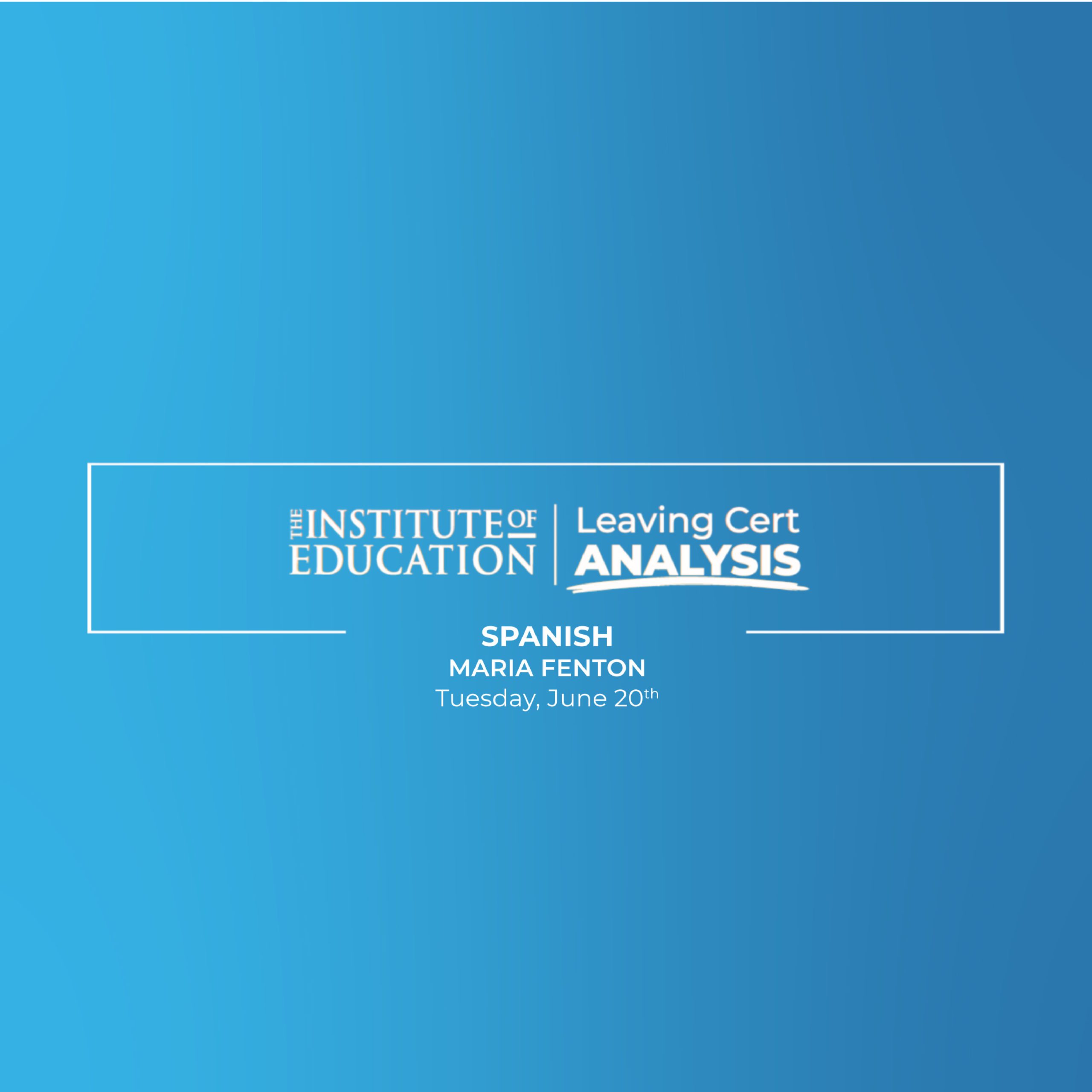Reaction to Leaving Cert 20223 Spanish (Higher Level) by Maria Fenton, Spanish teacher at The Institute of Education.
- A fair and manageable paper that was relevant to the lives of students.
- No curveballs meant that prepared students would have found the paper very accessible.
The reading comprehension section started with an extract by Gabriel García Márquez, but most students skip this prescribed literature and opt for the journalistic piece. This year’s paper had a piece on heatwaves in Spain. This brought in discussions of global warming – a topical issue that students and teachers would have prepared in advance and so much of the relevant vocabulary will be well-established. There were a few moments that were less typical, for example the phrase “a tope” meaning “on full blast” would not appear on any standard vocabulary sheet, but on the whole this piece was very manageable for students of all abilities. The following shorter texts would also have been encouraging for students. The two pieces on a charitable thief and fashion range for pets were unlikely to have been predicted, but the clear and intuitive vocabulary offset the peculiarity of the topics.
Section B’s longer reading comprehension was daunting in its length, but the vocabulary would not be taxing to a prepared student. Again, its theme was very relevant to the modern student: young adults living at home. This brought in discussions of rental costs and youth unemployment, both topics that students would have been aware of and likely discussed in class. While accessible and topical, there was a moment that might throw off a weaker student. The synonym question demands students identify a partner to “bastante” which many students would understand to typically mean “quite”, as in “quite tall”. However, the text uses the less common meaning of “sufficient/enough”. The section finished with some very accessible and open writing prompts that had something for everybody. The idea that young people nowadays have a “vida muy fácil”, “very easy life”, is something on which everyone will have an opinion. Students could adapt a wide range of topics from their study, so that anything from bullying, to exams, to drugs/alcohol could find a place on paper.
For Section C, most students enter the exam expecting to do the Dialogue, but this year saw a lovely Formal Letter. The question’s demands were clear, concise and all in the present tense. This allowed every student to navigate the task with ease, but stronger students would need to be imaginative in order to distinguish themselves. The rest of the paper was typical and should not surprise or shock students familiar with previous papers. The tense knowledge of the Dialogue and styles of writing was all in line with what students will have practiced.
The aural was also very accessible. The majority of the questions were clear but one or two contained phrases that would distinguish those we more familiarity with the language. Phrases like “estar harto de” meaning “fed up” or other terms like “above average” and “two centuries” instead of numerals would have challenged weaker students. However, I suspect students will be very content with this section.
In the end, students will likely feel happy with this paper. While it did have its challenges and a few idiomatic terms, it was fundamentally accessible – both in its topics and vocabulary.

